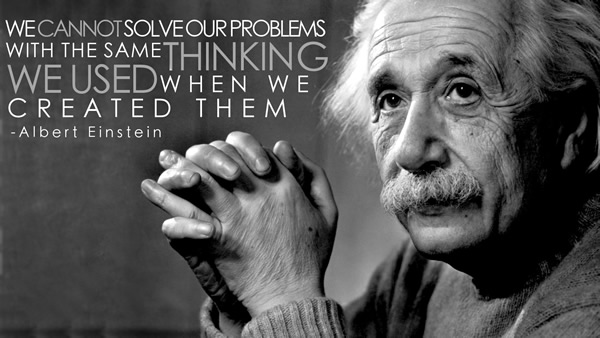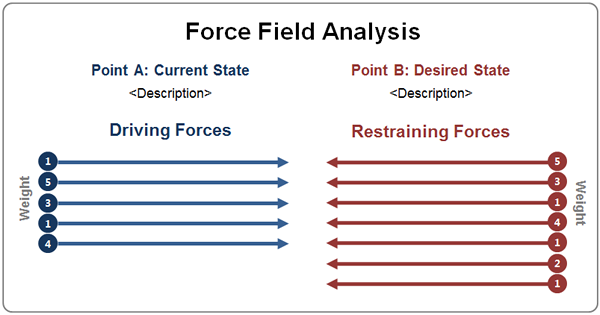ATD Blog
How to Select and Prioritize Sales Enablement Initiatives – Part 1
Tue Jul 30 2013

Welcome back, sales enablers!
In my post in June about Key Gaps in Our Sales Performance Ecosystem, I wrote about the progress we’ve made, the challenge of our powerful yet confusing ecosystem, and shared two issues that I see.
One issue can paralyze sales and training leaders from acting, or equally as concerning, set them off in the wrong direction. The other issue shapes the results of the actions they do take.
Issue 1
How do you conduct a root cause analysis, prioritize initiatives, and determine where to start, to get the best results?
Issue 2
How do you lead and manage the selected change initiatives to maximize effectiveness and returns?

This is the Pareto principle at its finest. Get these two things right, and you’ve hit on the analysis, decisions, and actions that will produce 80 percent of your results. I admit to being a purist at times, and a mentor used to say to me, “Mike, figure out the 20 percent of what you can do that will deliver 80 percent of your results. Then, get that 80 percent right, and you’ll still make a far bigger impact than most ever will.” The purist in me hates to admit it, but he was right. The “magic” (accomplished by logic and analysis) is in figuring out that 20 percent.
ISSUE 1
With that in mind, for the rest of this two-part post, let’s dig into Issue 1. This is no small feat for a book, let alone two blog posts, but I will do my best. I’ll start by detailing some ideas here but also providing links to additional reading that you will find helpful, if this is a topic of interest.
"If I had only one hour to save the world,
I would spend fifty-five minutes defining the problem, and only five minutes finding the solution."
Albert Einstein
MY METHOD FOR TACKLING ISSUE 1
Identify problems (gaps in performance).
Define problems.
Define desired outcomes.
Conduct a Force Field Analysis.
Develop possible solutions.
Select the best solutions.
Tie to the Sales Performance Ecosystem.
Plan and execute (segues into the change leadership and management).
I’ll cover steps one through four in the remainder of this post and steps five through eight in the next.
Problem Identification and Definition
The first thing you must do is clearly define the problems. This sounds simple, but it’s overlooked an alarming number of times. How you decide where to focus, from the seemingly overwhelming number of choices in the Sales Performance Ecosystem, is determined by what problem(s) you’re trying to solve. Use root cause analysis methods (see below) to ensure you’re uncovering the cause of the problems and not just the symptoms. To avoid writing a book, I’ll provide some resources for that.
Problem-definition/root cause analysis:
Defining the Problem: http://litemind.com/problem-definition/
Problem Solving—Start Here: http://www.mindtools.com/pages/article/newTMC\_00.htm
Define a Problem: http://www.wikihow.com/Define-a-Problem
Root Cause Analysis: http://www.mindtools.com/pages/article/newTMC\_80.htm
Desired Outcomes
Clearly define “where you are” or “Point A” and “where you want to be” or “Point B.” Without clearly-defined outcomes, the ecosystem choices will always seem overwhelming.

Force Field Analysis
Force Field Analysis is a method for listing, discussing, assessing, and weighting the various forces encouraging and hindering a desired change. Kurt Lewin developed the method in the 1940s. I’ve often used it just a little differently than intended, to help decide where to start to drive the greatest change.
Force Field Analysis: http://www.mindtools.com/pages/article/newTED\_06.htm
Here’s how I've done it:
Get the right people together. (I do peek at the ecosystem here and invite leaders from the areas who typically own the problems and solutions.)
Review the problem(s) and root cause analysis. Gain additional perspective and consensus.
Prioritize the problems. What’s the potential benefit of solving them?
Develop Point A (where you are) and Point B (where you want to be) for the top-prioritized problems.
Write down Point A and B for the top problem.
Starting with this problem, list the driving forces pushing you toward Point B and the restraining forces holding you back.
Weight the forces (it’s a somewhat-subjective “exercise,” but it’s helpful).
Repeat steps five through seven for the remaining top-prioritized problems.
(Here’s an example of how I’ve applied force field analysis to account development planning.)
I’ll stop here for part one and pick up next time with developing and selecting solutions. As always, I’ve provided some related reading below. I’ll look forward to hearing your perspective in the comments, and until next time… happy enabling!
Additional Related Reading:
Does Your Organization Need a Sales Transformation?
You've Reached ATD Member-only Content
Become an ATD member to continue
Already a member?Sign In
